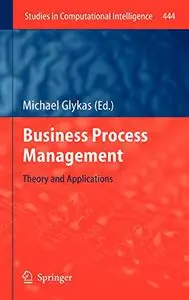Business Process Management: Theory and Applications by Michael Glykas
English | PDF | 2013 | 473 Pages | ISBN : 3642284086 | 10 MB
Business Process Management (BPM) has been in existence for decades. It uses, complements, integrates and extends theories, methods and tools from other scientific disciplines like: strategic management, information technology, managerial accounting, operations management etc. During this period the main focus themes of researchers and professionals in BPM were: business process modeling, business process analysis, activity based costing, business process simulation, performance measurement, workflow management, the link between information technology and BPM for process automation etc.
More recently the focus moved to subjects like Knowledge Management, Enterprise Resource Planning (ERP) Systems, Service Oriented Architectures (SOAs), Process Intelligence (PI) and even Social Networks. In this collection of papers we present a review of the work and the outcomes achieved in the classic BPM fields as well as a deeper insight on recent advances in BPM. We present a review of business process modeling and analysis and we elaborate on issues like business process quality and process performance measurement as weel as their link to all other organizational aspects like human resources management, strategy, information technology (being SOA, PI or ERP), other managerial systems, job descriptions etc. We also present recent advances to BPR tools with special focus on information technology, workflow, business process modeling and human resources management tools. Other chapters elaborate on the aspect of business process and organizational costing and their relationship to business process analysis, organizational change and reorganization. In the final chapters we present some new approaches that use fuzzy cognitive maps and a recently developed software tool for scenario creation and simulation in strategic management, business process management, performance measurement and social networking.
The audience of this book is quite wide. The first chapters can be read by professionals, academics and students who want to get some basic insight into the BPM field whereas the remaining present more elaborate and state of the art concepts methodologies and tools for an audience of a more advanced level.



